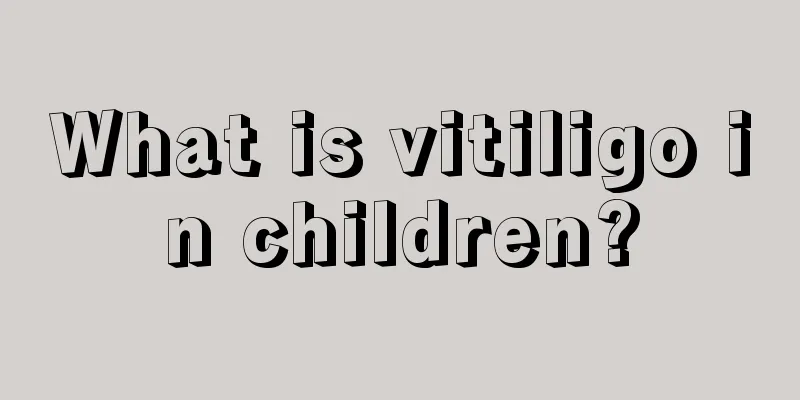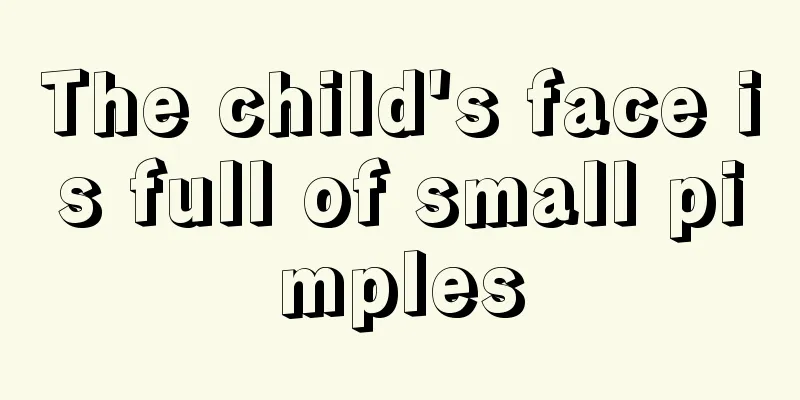The symptoms of calcium deficiency in baby's hair, parents should understand these knowledge

|
As we all know, calcium is very important for children's physical and mental development, but many times parents do not know that their children are calcium deficient. Today I will tell you a trick, which is to judge whether the child is calcium deficient by his hair, because if the child is calcium deficient, the hair will have the following obvious manifestations. 1. Hair grows vertically Nutritional anemia, weak spleen and stomach, calcium and zinc deficiency and other reasons can cause the baby's hair to grow upright. Mothers can improve their nutrition, ensure the quality of breast milk, and allow their babies to get balanced nutrition, and the symptoms will gradually improve. 2. Baldness on the back of the head Most newborn babies have sparse hair on the back of their heads, commonly known as "baldness on the back of the head", but new parents should not blindly equate baldness on the back of the head with calcium deficiency. Since newborns have not learned to sit yet, they lie flat most of the day. In addition, babies sweat a lot, and the sweat clogs the hair follicles, which may affect hair growth and cause baldness on the back of the head. As your baby learns to sit and stand, the hair on the back of his head will gradually grow. If the baby has bald spots on the back of the head and is also irritable, sweating, crying at night, or even has rib protrusions, it is a sign of calcium deficiency. It is best for parents to take their babies to the hospital for a check-up and give their babies vitamin D and calcium supplements under the guidance of a doctor. 3. The hair is thin on one side and dense on the other, and the two sides are asymmetrical This situation may be caused by the different developmental maturity of hair follicles in different positions, or it may be related to the baby's preference for side sleeping and sweat secretion. This situation will improve as you age and your hair follicles mature. 4. Yellow hair or mixed with white hair Because the baby lacks certain trace elements, which affects the metabolism of melanin. But parents don’t need to worry too much. As the baby grows older and his nutrition intake becomes more comprehensive, the yellow or white hair will gradually fall off and be replaced by black hair. After the baby starts eating complementary foods, he can eat more foods rich in trace elements such as calcium, zinc, iron, selenium, iodine, such as walnuts, red dates, raisins, etc. 5. Thin and sparse hair This is because the baby's hair follicles have not yet fully developed. As the hair follicles mature, the hair will become black and thick when the baby is one or two years old. In addition, the baby's hair quality and amount are greatly affected by genetic factors. If the parents have sparse and yellow hair, the child is less likely to grow thick hair. Whether the baby's hair is thick or thin is also related to whether the mother's protein and vitamin intake during pregnancy is adequate. |
<<: Tips for removing baby's earwax, parents should pay attention
>>: My baby's hair is sparse and grows slowly. Do you know how to solve this problem?
Recommend
What to do if your baby doesn't like to wash his hair
When bathing or washing the baby's hair, the ...
Is it effective to apply sesame oil to baby’s eczema?
The baby's skin is very delicate. If it is sl...
How to educate a two-year-old baby?
When the baby is about two years old, he or she c...
Why does my child always sleep on his stomach?
Parents who have children will find a problem, th...
Do pediatric bronchodilators have side effects?
Bronchodilators are actually an antiasthmatic dru...
How much is the appropriate sleeping cover for a newborn baby?
Good sleep can ensure that you are full of energy...
What should I do if my child is allergic to peaches?
How many types of peaches are there that we usual...
Can babies eat egg white? Beware of allergic reactions
In the eyes of many parents, eggs are rich in nut...
Can washing the baby's face with honeysuckle cure dampness?
For some babies, they will suffer from the diseas...
What should I do if my child gets scalded and blistered?
It is very common for children to be scalded in l...
How to reduce children's fever
Children's fever is a problem that many paren...
Children cough when they run hot
If our baby coughs when exercising, it may be cau...
How to treat black nails in children
Our nails are pink or light pink, but we often fi...
Early education for 10-month-old babies
Nowadays, there are many early education institut...
What doctor should I go to if my child is late in speaking?
Every parent is very nervous about their children...









